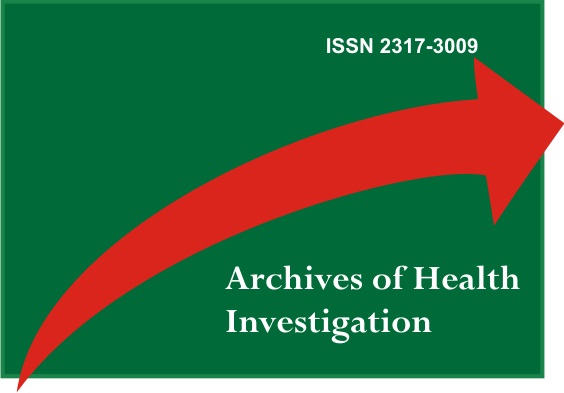Uncommon case of multiple sialolites at submandibular gland duct
DOI:
https://doi.org/10.21270/archi.v10i6.5004Keywords:
Salivary Gland Calculi, Submandibular Gland, Salivary DuctsAbstract
Sialolithiasis represents an obstruction of the salivary gland by the formation of a calcified structure (sialolith) within its ducts, or less frequently, within the gland itself, which results in decreased salivary flow leading to inflammation and, occasionally, infection. The literature reports that about 80 to 90% of them affect the submandibular gland. Sialolithiasis can occur at any age, being more common in adults over 40, with a preference for the male gender. The presence of multiple sialoliths is considered low, especially in the submandibular gland. The purpose of this work is to report a case of an 18-year-old patient who presented useful as well as painful episodes. On palpation of the submandibular duct path, an increase in volume was observed, and the tactile sensation was hardened on the lingual floor on the same side. To confirm the clinical findings, a computed tomography scan was requested, in which four circular hyperdense masses were observed. The multiple stones were removed through surgical access under local anesthesia. The patient showed an improvement in the initial condition and had no complications. Thus, the surgical treatment proved to be effective for the treatment of sialolithiasis.
Downloads
References
Iqbal A, Gupta AK, Natu SS, Gupta AK. Unusually large sialolith of Wharton's duct. Ann Maxillofac Surg. 2012;2(1):70-73.
Omezli MM, Ayranci F, Sadik E, Polat ME. Case report of giant sialolith (megalith) of the Wharton's duct. Niger J Clin Pract. 2016;19(3):414-7.
Oliveira TP, Oliveira INF, Pinheiro ECP, Gomes RCF, Mainenti P. Sialolito gigante de ducto da glândula submandibular tratado por excisão e reparo ductal: relato de caso. Braz J Otorhinolaryngol. 2016;82(1):112-115
Jaeger F, Andrade R, Anvarenga RL, Galizes BF, Amaral MBF. Sialolito gigante no ducto da glândula submandibular. Rev Port Estomatol Med Dent Cir Maxilofac. 2013;54(1):33-6.
Capaccio P, Torretta S, Ottavian F, Sambataro G, Pignataro L. Modern management of obstructive salivary diseases. Acta Otorhinolaryngol Ital. 2007;27(4):161-72.
Kalinowski M, Heverhagen JT, Rehberg E, Klose KJ, Wagner HJ. Comparative study of MR sialography and digital subtraction sialography for benign salivary gland disorders. AJNR Am J Neuroradiol. 2002;23(9):1485-92.
Koch M, Zenk J, Iro H. Algorithms for treatment of salivary gland obstructions. Otolaryngol Clin North Am. 2009;42(6):1173-92.
Terraz S, Poletti PA, Dulguerov P, Dfouni N, Becker CD, Marchal F, Becker M. How reliable is sonography in the assessment of sialolithiasis? AJR Am J Roentgenol. 2013;201(1):W104-9.
Aiyekomogbon JO, Babatunde LB, Salam AJ. Submandibular sialolithiasis: The roles of radiology in its diagnosis and treatment. Ann Afr Med. 2018;17(4):221-24.
Kraaij S, Brand HS, van der Meij EH, de Visscher JG. Biochemical composition of salivary stones in relation to stone- and patient-related factors. Med Oral Patol Oral Cir Bucal. 2018;23(5):e540-44.
Torres LHS, Santos MS, Diniz JA, Uchoa CP, Silva JAA, Pereira Filho VA et al. Remoção cirúrgica de sialolito em glândula submandibular: relato de caso. Arch Health Invest. 2019;8(8):421-24.


